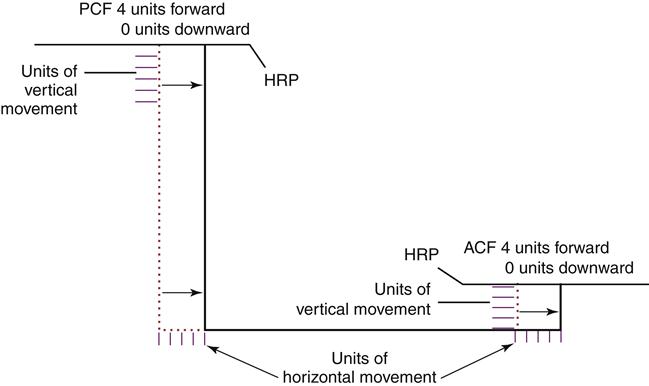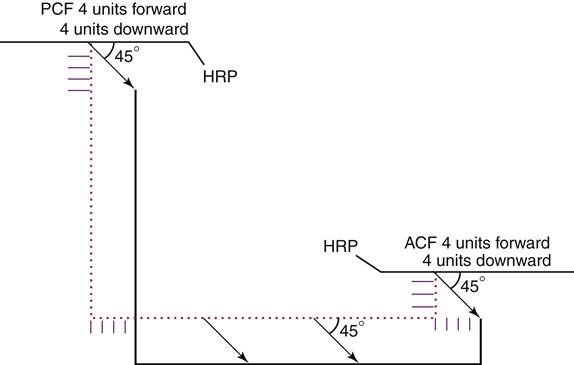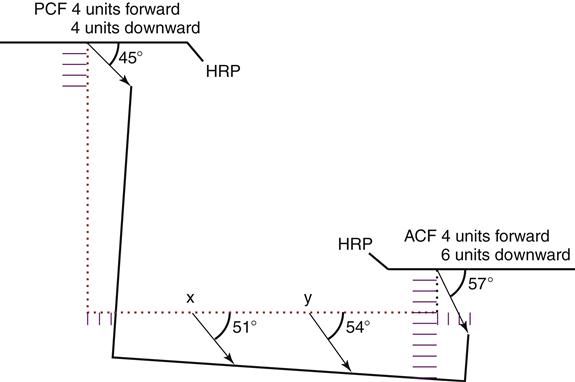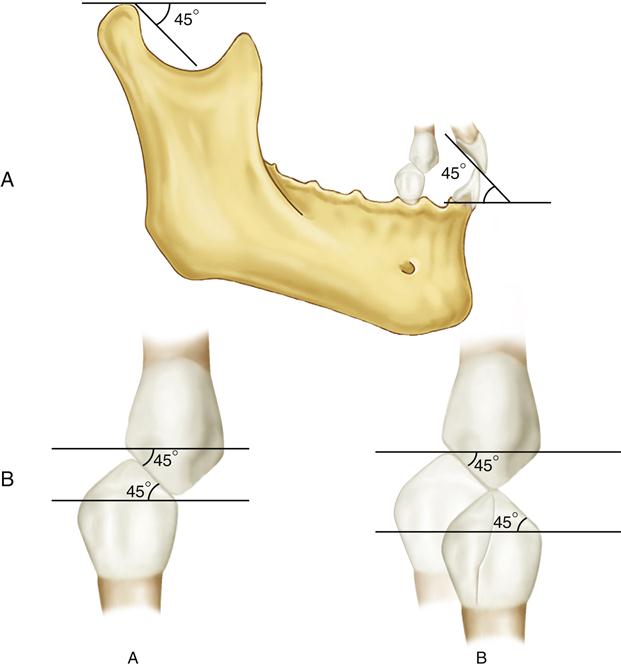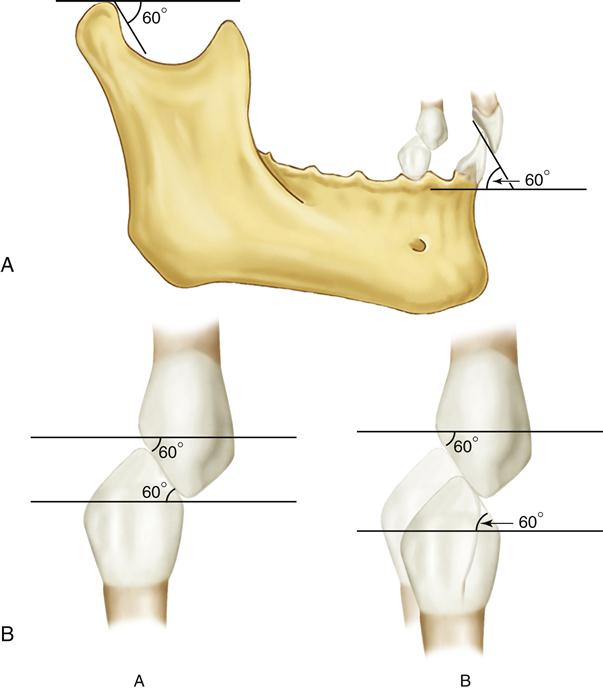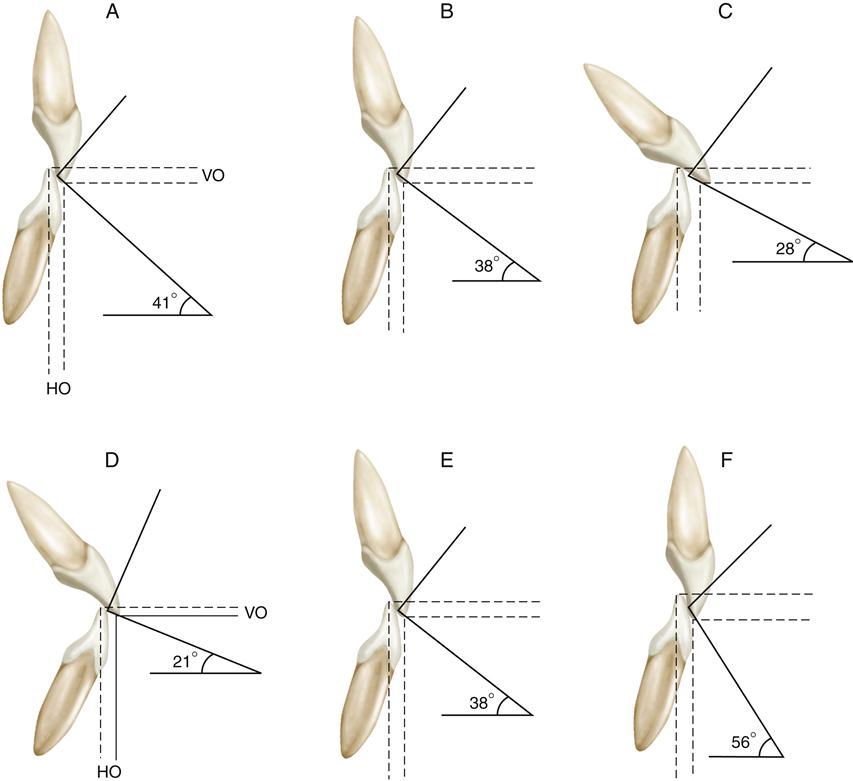Determinants of Occlusal Morphology
“DEVELOPING TEETH THAT SUCCESSFULLY PERMIT EFFICIENT MASTICATORY FUNCTION IS BASIC TO DENTISTRY AND SURVIVAL.”
—JPO
IN HEALTH, THE OCCLUSAL ANATOMY of the teeth functions in harmony with the structures controlling the movement patterns of the mandible. The structures that determine these patterns are the temporomandibular joints (TMJs) and the anterior teeth. During any given movement, the unique anatomic relationships of these structures combine to dictate a precise and repeatable pathway. To maintain harmony of the occlusal condition, the posterior teeth must pass close to but not contact their opposing teeth during mandibular movement. It is important to examine each of these structures carefully and appreciate how the anatomic form of each can determine the occlusal morphology necessary to achieve an optimal occlusal relationship. The structures that control mandibular movement are divided into two types: those that influence the movement of the posterior portion of the mandible and those that influence the movement of the anterior portion of the mandible. The TMJs are considered the posterior controlling factors and the anterior teeth the anterior controlling factors. The posterior teeth are positioned between these two controlling factors and thus can be affected by both to varying degrees.
Posterior Controlling Factors (Condylar Guidance)
As the condyle moves out of the centric relation position, it descends along the articular eminence of the mandibular fossa. The rate at which it moves inferiorly as the mandible is being protruded depends on the steepness of the articular eminence. If the surface is very steep, the condyle will describe a steep vertically inclined path. If it is flatter, the condyle will take a path that is less vertically inclined. The angle at which the condyle moves away from a horizontal reference plane is referred to as the condylar guidance angle.
Generally, the condylar guidance angle generated by the orbiting condyle when the mandible moves laterally is larger than when the mandible protrudes straight forward. This is because the medial wall of the mandibular fossa is generally steeper than the articular eminence of the fossa directly anterior to the condyle.
The two TMJs provide guidance for the posterior portion of the mandible and are largely responsible for determining the character of mandibular movement posteriorly. They have therefore been referred to as the posterior controlling factors of mandibular movement. The condylar guidance is considered to be a fixed factor, since it is unalterable in the healthy patient. It can be altered, however, under certain conditions (trauma, pathosis, or a surgical procedure).
Anterior Controlling Factors (Anterior Guidance)
Just as the TMJs determine or control the manner in which the posterior portion of the mandible moves, so the anterior teeth determine how the anterior portion moves. As the mandible protrudes or moves laterally, the incisal edges of the mandibular teeth occlude with the lingual surfaces of the maxillary anterior teeth. The steepness of these lingual surfaces determines the amount of vertical movement of the mandible. If the surfaces are very steep, the anterior aspect of the mandible will describe a steeply inclined path. If the anterior teeth have little vertical overlap, they will provide little vertical guidance during mandibular movement.
The anterior guidance is considered to be a variable rather than a fixed factor. It can be altered by dental procedures such as restorations, orthodontia, and extractions. It can also be altered by pathologic conditions such as caries, habits, and tooth wear.
Understanding the Controlling Factors
To understand the influence of mandibular movement on the occlusal morphology of posterior teeth, one must consider the factors that influence mandibular movement. As discussed in Chapter 4, mandibular movement is determined by the anatomic characteristics of both the TMJs posteriorly and the anterior teeth anteriorly. Variations in the anatomy of the TMJs and the anterior teeth can lead to changes in the movement pattern of the mandible. If the criteria for optimal functional occlusion are to be fulfilled, the morphologic characteristics of each posterior tooth must be in harmony with those of its opposing tooth or teeth during all eccentric mandibular movements. Therefore the exact morphology of the tooth is influenced by the pathway it travels across its opposing tooth or teeth.
The relationship of a posterior tooth to the controlling factors influences the precise movement of that tooth. This means that the nearer a tooth is to the TMJ, the more the joint’s anatomy will influence its eccentric movement and the less the anatomy of the anterior teeth will influence its movement. Likewise the nearer a specific tooth is to the anterior teeth, the more the anatomy of the anterior teeth will influence its movement and the less the anatomy of the TMJs will influence its movement.
The occlusal surfaces of posterior teeth consist of a series of cusps with both vertical and horizontal dimensions. Cusps are made up of convex ridges that vary in steepness (vertical dimension) and direction (horizontal dimension).
Mandibular movement has both a vertical and a horizontal component; it is the relationship between these components or the ratio that is significant in the study of mandibular movement. The vertical component is a function of the superoinferior movement, and the horizontal component is a function of the anteroposterior movement. If a condyle moves downward 2 units as it moves forward 2 units, it moves away from a horizontal reference plane at an angle of 45 degrees. If it moves downward 2 units and forward 1 unit, it moves away from this plane at an angle of approximately 64 degrees. The angle of deviation from the horizontal reference plane is what we study in mandibular movement.
Figure 6-1 represents the mandible as it moves 4 units in the horizontal plane and 0 units in the vertical plane, resulting in a deviation away from horizontal of 0 degrees. Figure 6-2 shows the mandible moving 4 units in the horizontal and 4 units in the vertical plane. The result here is a deviation away from horizontal of 45 degrees.
In Figure 6-3 the mandible moves 4 units in the horizontal plane, but in the vertical plane the posterior controlling factor (PCF) moves 4 units and the anterior controlling factor (ACF) moves 6 units. This results in a 45-degree movement of the PCF and a 57-degree movement of the ACF. Points between the factors will deviate by different amounts from the horizontal plane depending on their proximity to each factor. The nearer a point is to the PCF, for example, the more its movement will approach 45 degrees (because of the greater influence of the PCF on its movement). Likewise the nearer a point is to the ACF, the more its movement will approach 57 degrees (because of the greater influence of the ACF on its movement). A point equidistant from the factors will move away from horizontal at an angle of approximately 51 degrees (which is midway between 45 and 57 degrees), and one that is 25% closer to the ACF than to the PCF will move away from horizontal at an angle of 54 degrees (one fourth of the way between 45 and 57 degrees).
To examine the influence of any anatomic variation on the movement pattern of the mandible, it is necessary to control all factors except the one being examined. The significance of the anterior and condylar guidance lies in how they influence posterior tooth shape. Since the occlusal surface can be affected in two manners (height and width), it is logical to separate the structural influence on mandibular movement into factors that influence the vertical components and those that influence the horizontal components. The anatomy of the occlusal surface is also influenced by its relationship with the tooth passing across it during movement. Therefore the location of the tooth to the center of rotation is also discussed below.
Vertical Determinants of Occlusal Morphology
Factors that influence the heights of cusps and the depths of fossae are the vertical determinants of occlusal morphology. The length of a cusp and the distance it extends into the depth of an opposing fossa are determined by three factors:
1. The anterior controlling factor of mandibular movement (i.e., anterior guidance)
2. The posterior controlling factor of mandibular movement (i.e., condylar guidance)
The posterior centric cusps are generally developed to disocclude during eccentric mandibular movements but to make contact in the intercuspal position. For this to occur, they must be long enough to make contact in the intercuspal position but not so long that they do so during eccentric movements.
Effect of Condylar Guidance (Angle of the Eminence) on Cusp Height
As the mandible is protruded, the condyle descends along the articular eminence. Its descent in relation to a horizontal reference plane is determined by the steepness of the eminence. The steeper the eminence, the more the condyle is forced to move inferiorly as it shifts anteriorly. This results in greater vertical movement of the condyle, mandible, and mandibular teeth.
In Figure 6-4 the condyle moves away from a horizontal reference plane at a 45-degree angle. To simplify visualization, anterior guidance is illustrated at an equal angle. The cusp tip of premolar A will move away from a horizontal reference plane at a 45-degree angle. To avoid eccentric contact between premolar A and premolar B in a protrusive movement, cuspal inclination must be less than 45 degrees.
In Figure 6-5 condylar and anterior guidance are presented as being 60 degrees to the horizontal reference planes. With these steeper vertical determinants, premolar A will move away from premolar B at a 60-degree angle, resulting in longer cusps. It can therefore be stated that a steeper angle of the eminence (condylar guidance) allows for steeper posterior cusps.
Effect of Anterior Guidance on Cusp Height
Anterior guidance is a function of the relationship between the maxillary and mandibular anterior teeth. As presented in Chapter 3, it consists of the vertical and horizontal overlaps of the anterior teeth. To illustrate its influence on mandibular movement and therefore on the occlusal shape of posterior teeth, some combinations of vertical and horizontal overlap appear in Figure 6-6.
Stay updated, free dental videos. Join our Telegram channel

VIDEdental - Online dental courses


